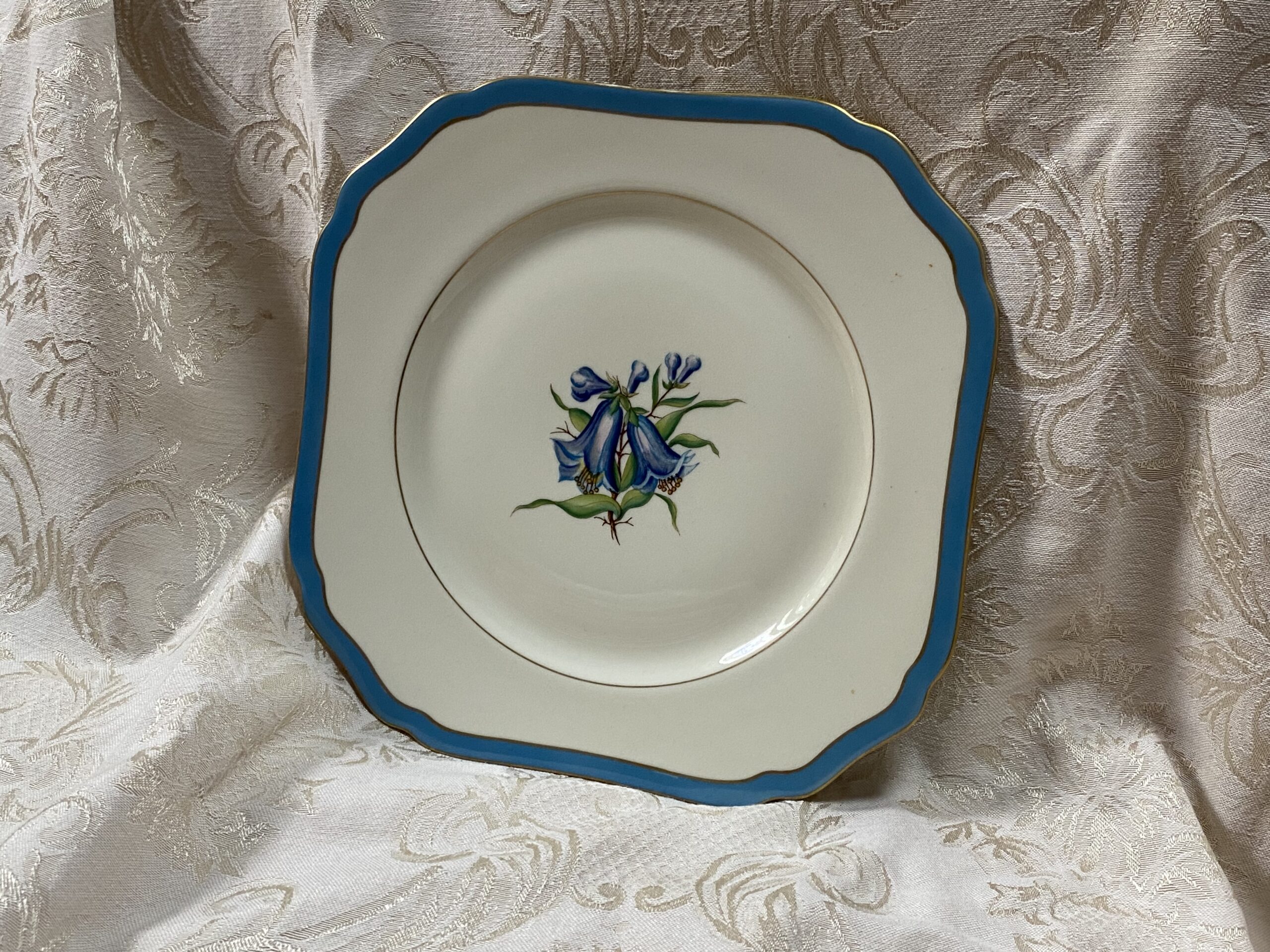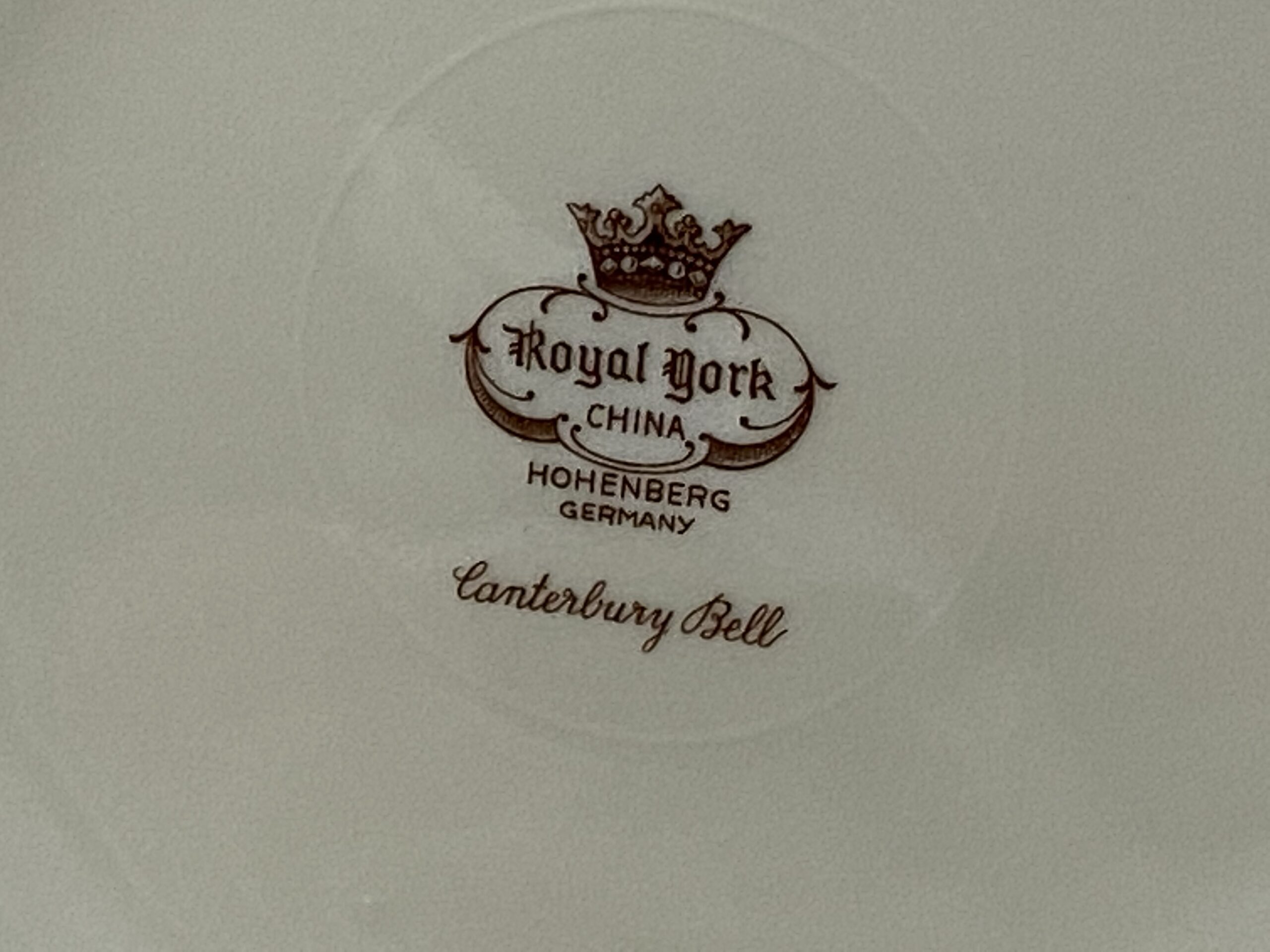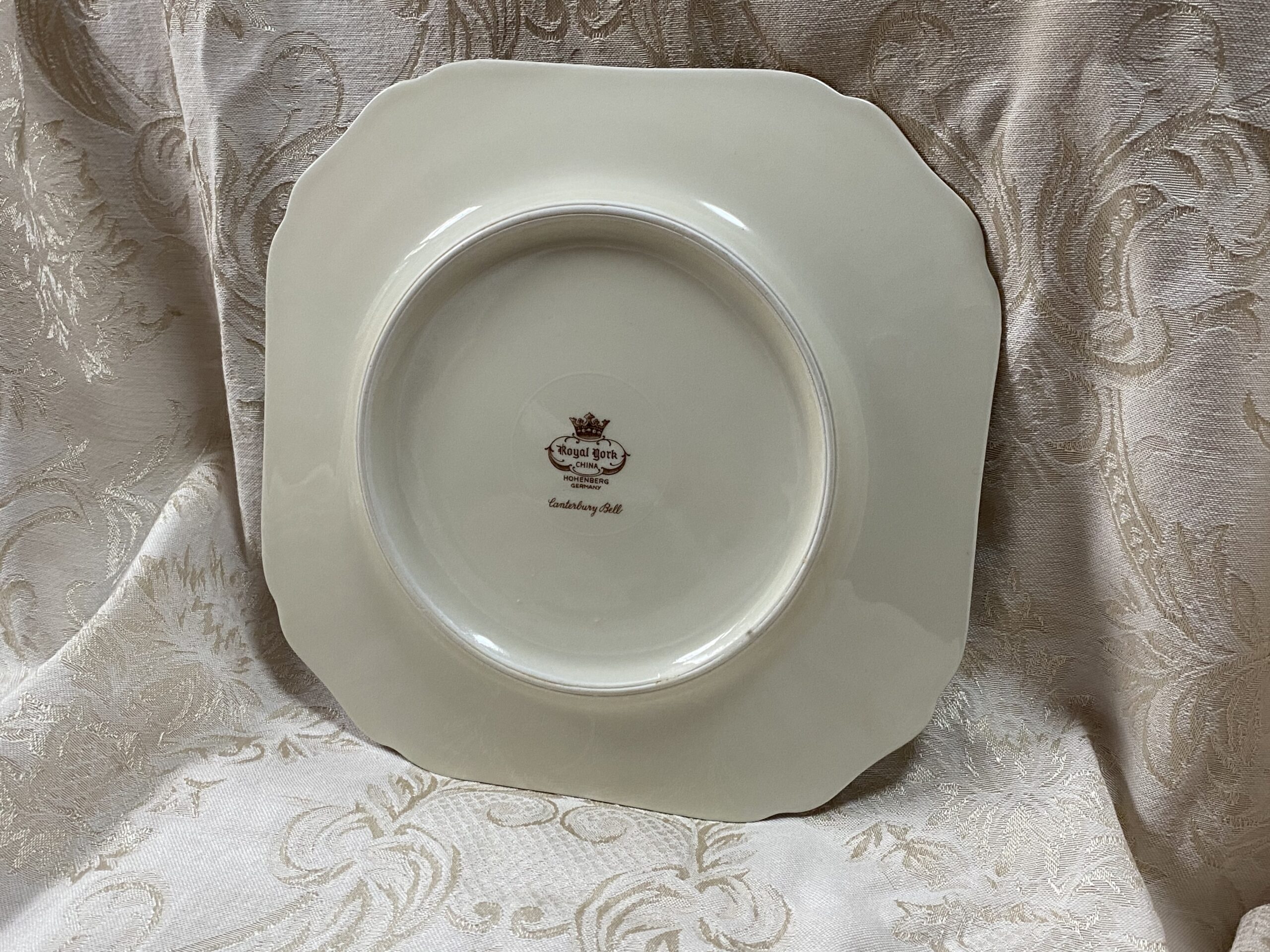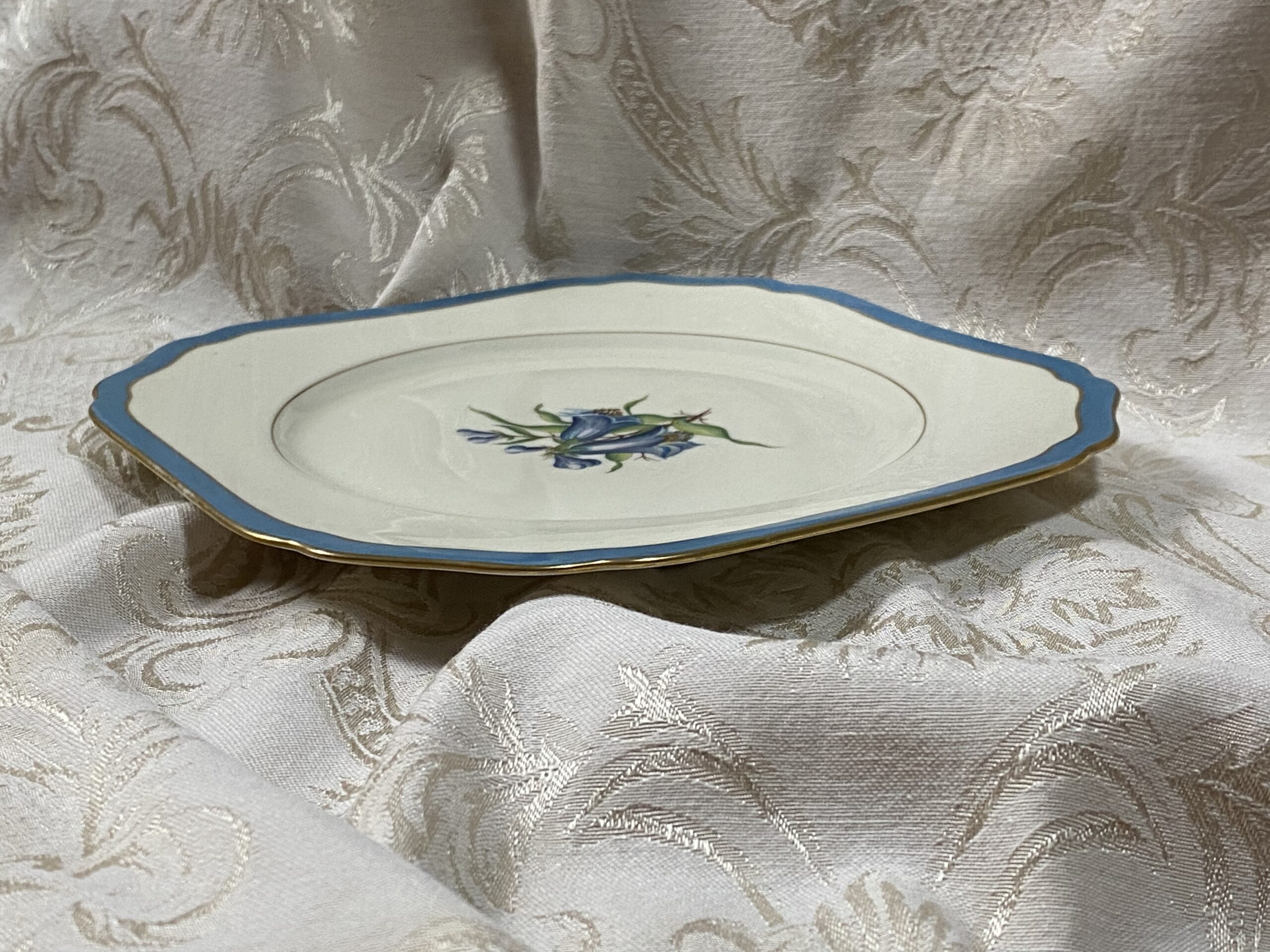Royal York China Canterbury Bell (Hohenberg, Germany): 14,300 ppm Lead + 14 ppm Cadmium (on the center of the food surface of the dish.)
XRF test results for the dish pictured.
Reading #1) In the center of the food surface on the blue bell flower design
60-second reading
- Lead (Pb): 14,300 +/- 300 ppm
- Cadmium (Cd): 14 +/- 5 ppm
- Mercury (Hg): non-detect
- Bromine (Br): non-detect
- Chromium (Cr): 2,434 +/- 314 ppm
- Manganese (Mn): 6,416 +/- 337 ppm
- Iron (Fe): 4,620 +/- 231 ppm
- Cobalt (Co): 815 +/- 93 ppm
- Copper (Cu): 81 +/- 25 ppm
- Zinc (Zn): 3,440 +/- 103 ppm
- Indium (In): 17 +/- 7 ppm
- Tin (Sn): 70 +/- 10 ppm
- Antimony (Sb): 164 +/- 15 ppm
- Barium (Ba): 222 +/- 35 ppm
- Platinum (Pt): 243 +/- 65 ppm
- No other metals detected in consumer goods mode.
Reading #2) In the center of the food surface on the plain cream colored part of the design
60-second reading
- Lead (Pb): 99 +/- 12 ppm
- Cadmium (Cd): 13 +/- 5 ppm
- Mercury (Hg): non-detect
- Bromine (Br): non-detect
- Chromium (Cr): non-detect
- Manganese (Mn): 12,100 +/- 400 ppm
- Iron (Fe): 5,088 +/- 244 ppm
- Copper (Cu): 79 +/- 24 ppm
- Zinc (Zn): 42 +/- 13 ppm
- Indium (In): 10 +/- 6 ppm
- Tin (Sn): 12 +/- 7 ppm
- Antimony (Sb): 15 +/- 10 ppm
- Barium (Ba): 185 +/- 28 ppm
- Bismuth (Bi): 61 +/- 10 ppm
- No other metals detected in consumer goods mode.
Reading #3) On the food surface on the blue & gold edge band of the dish
60-second reading
- Lead (Pb): 18,100 +/- 400 ppm
- Cadmium (Cd): 24 +/- 7 ppm
- Mercury (Hg): non-detect
- Bromine (Br): non-detect
- Chromium (Cr): 2,210 +/- 326 ppm
- Manganese (Mn): 5,599 +/- 340 ppm
- Iron (Fe): 3,442+/- 218 ppm
- Cobalt (Co): 3,286 +/- 169 ppm
- Copper (Cu): 186 +/- 34 ppm
- Zinc (Zn): 4,606 +/- 137 ppm
- Indium (In): 20 +/- 9 ppm
- Tin (Sn): 289 +/- 17 ppm
- Barium (Ba): 201 +/- 40 ppm
- Platinum (Pt): 291 +/- 79 ppm
- Gold (Au): 1,794 +/- 90 ppm
- No other metals detected in consumer goods mode.
For those new to this website:
Tamara Rubin is a Federal-award-winning independent advocate for consumer goods safety and a documentary filmmaker. She is also a mother of Lead-poisoned children. Tamara’s sons were acutely Lead-poisoned in August of 2005. She began testing consumer goods for toxicants in 2009 and was the parent-advocate responsible for finding Lead in the popular fidget spinner toys in 2017. Tamara uses XRF testing (a scientific method used by the U.S. Consumer Product Safety Commission) to test consumer goods for toxicants (specifically heavy metals), including Lead, Cadmium, Mercury, Antimony, and Arsenic. All test results reported on this website are science-based, accurate, and replicable. Items are tested multiple times, to confirm the test results for each component tested and reported on. Please click through to this link to learn more about the testing methodology used for the test results discussed and reported on this website.
Never Miss an Important Article Again!
Join our Email List








